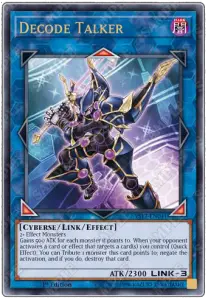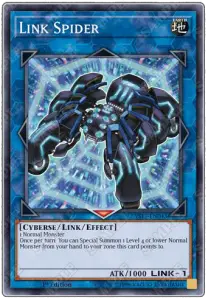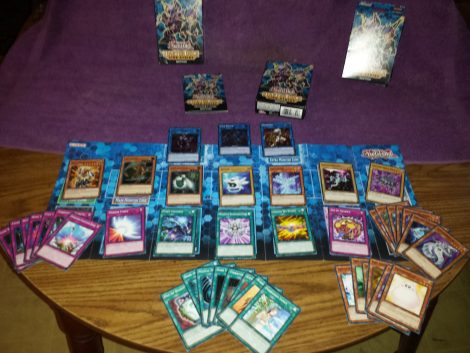Starter Deck –Link Strike– First Look and Review
Starter Deck –Link Strike– introduces the long-awaited Link Monsters! New rules for Link Summoning make where you Summon your monsters just as important as how and when you play them, giving you new ways to counter your opponent’s plans and control the competition. Position your monsters and link them correctly to protect your cards, boost your Attack Points, or reuse whatever you link to; the possibilities are endless and the Yu-Gi-Oh! TRADING CARD GAME will never be the same.
 Build bigger combos, outwit your opponent’s plays, and prepare for new challenges, as Link Monsters like Decode Talker and Link Spider revolutionize the way you Duel.
Build bigger combos, outwit your opponent’s plays, and prepare for new challenges, as Link Monsters like Decode Talker and Link Spider revolutionize the way you Duel.
Starter Deck –Link Strike– launches on July 21st with 43 cards: 38 Commons, 2 Ultra Rares, 3 Super Rares, a Beginner’s Guide, and an updated Game Mat with new Extra Monster Zones. MSRP: $9.99 per box.
Review
Link Monsters make it possible to control many different monsters Summoned from your Extra Deck, at the same time! Any adjacent Monster Zones a Link Monster’s arrows point to become available to Summon new monsters from your Extra Deck. Getting as many arrows pointing at your own zones as you can, while avoiding arrows pointing to your opponent’s zones, is a new and important element of strategy you’ll want to master.
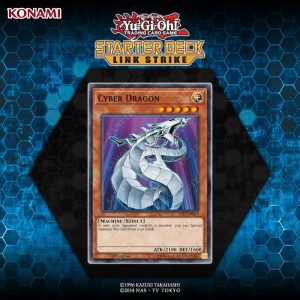 Link Monsters start the game in your Extra Deck and you Link Summon them by sending face-up monsters you control to the Graveyard. Every Link Monster will tell you exactly what kind of monsters you need to sacrifice and how many to. Link Monsters don’t have a Level or Rank, or even a DEF stat. They can never be face-down or in Defense Position. They’re always face-up and in Attack Position so you always know where their arrows point.
Link Monsters start the game in your Extra Deck and you Link Summon them by sending face-up monsters you control to the Graveyard. Every Link Monster will tell you exactly what kind of monsters you need to sacrifice and how many to. Link Monsters don’t have a Level or Rank, or even a DEF stat. They can never be face-down or in Defense Position. They’re always face-up and in Attack Position so you always know where their arrows point.
Depending on their effects, a Link Monster could gain ATK for every monster in a zone it points to, or protect any monster in a zone it points to from being destroyed.
Link Monsters have a Link Rating in place of a Level or Rank. A Link Monster’s Link Rating determines the total number of Link Materials required to Link Summon it. A Link Monster’s Link Number is also equal to the number of Link Arrows it has. A Link Monster’s Link Number can be found next to its ATK, in place of the traditional DEF value.
Link Monsters do not possess Levels or Ranks, therefore they cannot be used as material for a Ritual, Synchro, or Xyz Summon. Also, Level or Rank-modifying cards such as Harmonic Waves, Feedback Warrior, or Xiangsheng Magician do not affect Link Monsters. The same thing can be said for Spells/Traps that affect Levels/Ranks such as Gravity Bind, Level Limit – Area B or Planckton.
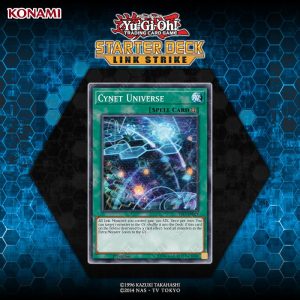
Link Monsters commonly use effects where they point to. As such, Decks focused around Link Monsters require methods to quickly Summon monsters where Link Monsters point to in addition to Summoning the Link Monsters themselves. When attempting to Summon multiple Link Monsters, it is important to decide in what order to Summon them, as their Link Arrows will dictate where the others can be Summoned and what monsters will be Linked to them.
Link Monsters with higher Link Ratings can be Special Summoned more quickly by Link Summoning multiple weaker Link Monsters first. This also helps to place them in locations that will take better advantage of their Link Arrows.
Powerful Link Monsters are typically balanced by having a higher Link Rating and forward-pointing Link Arrows, allowing the opponent to summon more Extra Deck monsters. For example: Decode Talker, Firewall Dragon, Topologic Bomber Dragon and Encode Talker all have Link Arrows that point towards the opponent’s field when they are placed in the Extra Monster Zone, while weaker Link Monsters such as Missus Radiant, Gaiasaber, the Virtual Knight and Link Spider do not.
Overall, this will take getting used to but should make duels much more interesting and add a new strategy to game play.


